 Most viewed Most viewed |

Closing off the road to traffic for "pedestrian's paradise."26 views
|
|

Thanks mom!26 views
|
|
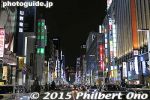
26 views
|
|

26 views
|
|

26 views
|
|

26 views
|
|

Yurakucho Mullion i26 views
|
|

Mascot Torapi shows the way.26 views
|
|

26 views
|
|

26 views
|
|

Also on stage.26 views
|
|

Food stalls.26 views
|
|

A real crowd pleaser. Beautiful and photogenic.26 views
|
|

26 views
|
|

26 views
|
|

26 views
|
|
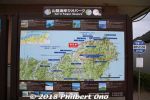
San'in Kaigan Geopark (山陰海岸ジオパーク) 26 views
|
|
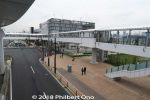
Shijo-mae Station is connected directly to convenient pedestrian overpasses leading to the three Toyosu Market buildings/blocks. (That's Block 6 in the distance.)26 views
|
|

Directional signs for tourists are in Japanese, English, Chinese, and Korean.26 views
|
|
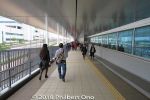
After seeing the Block 6 restaurants, we walked along this long corridor and entered the market part of the building.26 views
|
|
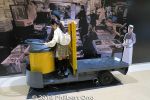
Anybody could get on the turret truck and pose for photos.26 views
|
|
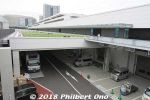
Lastly, this is the fruit and vegetable market, Block 5.26 views
|
|

If you've never been to this shrine, it's impossible to tell how far or how near you are. The path makes a few turns.26 views
|
|

Secondary shrine for Amaterasu Sun Goddess and Sugawara Michizane. 大鳥美波比神社26 views
|
|

JR Otori Station. 鳳駅26 views
|
|

Another mascot.26 views
|
|

Stats for the top runners in the 73rd Lake Biwa Mainichi Marathon in 2018.26 views
|
|

26 views
|
|

NHK TV broadcasts the marathon live nationwide.26 views
|
|

26 views
|
|

26 views
|
|
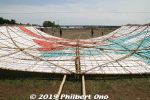
26 views
|
|
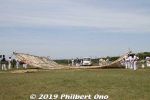
26 views
|
|
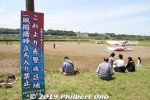
26 views
|
|
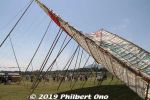
26 views
|
|
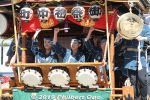
Kumagaya Uchiwa Matsuri float drummers. For this day, eight of the twleve Kumagaya Uchiwa Matsuri floats greeted visitors.26 views
|
|
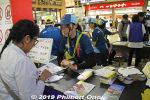
Volunteers give local information to foreign visitors.26 views
|
|

USA rugby fans.26 views
|
|
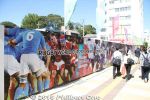
Walking toward the shuttle bus stop near the fan zone.26 views
|
|
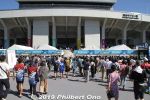
Before entering Kumagaya Rugby Stadium, there was a security check of bags. Couldn't bring in any drinks.26 views
|
|
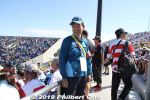
"It's so nice to be a volunteer here, heh-heh! I'm happy with my assignment...."26 views
|
|
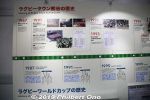
26 views
|
|
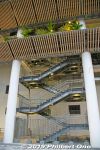
Looks like fire escape stairs, but they are normally used to exit the stadium. 26 viewsIt was closed while people were entering the stadium (using escalators). The stairs were opened after the event ended.
|
|
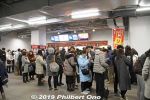
A number of concession stands along the concourse, but long lines. 26 viewsI brought my own food and drinks, so I didn't bother to stand in line. No vending machines in the stadium. The cheapest drinks were ¥300.
|
|

Layout of a block of seats. The block numbers indicate the tier. 100s for the 1st tier (expensive seats), 200s, for the 2nd tie, and 300s here for the 3rd tier (cheap seats, ¥5000 for this event). 26 viewsHere, you should check your seat No.
If your seat No. is 111 to 124, enter on the left side of the block. If it's 125 to 138, go to the other corridor entrance on the right side of the block. The field is toward the top of this diagram (Row 1).
|
|
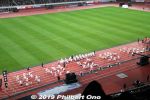
From Miyagi Prefecture, Sendai Suzume Odori dance which I saw earlier outside the stadium. 26 viewsNormally held in late July near Sendai Station. 仙台すずめ踊り http://www.suzume-odori.com/
|
|
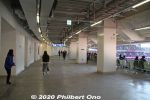
2nd tier concourse (3rd floor) does not have any crosswinds.26 views
|
|

Vissel Kobe fans on the North Stand. "Vissel" combines the words "victory" and "vessel." "Vessel" because Kobe is a port city.26 views
|
|

Buffet at Hakone Ashinoko Hanaori hotel.26 views
|
|
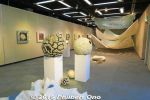
Exhibition room displaying washi art.26 views
|
|
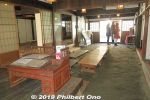
Small desk was for the merchant at work for his tobacco business at Komatsu-ya or Yoshida Family Residence (吉田家住宅).26 views
|
|

One easy way to explore Mt. Oyama: 1. From Isehara Station Kitaguchi (North Exit), go to bus stop 4 and take a bus for Oyama Cable (30 min). 26 views2. From the bus stop, walk up the Koma-sando path to Oyama Cable Station (20 min.).
3. Take the Oyama Cable car to Afuri Jinja Station. (6 min.).
4. Visit Oyama Afuri Shrine Shimosha.
5. Take the Oyama Cable car back down. If you want, get off at Oyama-dera Station to visit Oyama-dera Temple.
6. From Oyama Cable Station, walk back down the Koma-sando path to Oyama Cable bus stop for the bus back to Isehara Station.
|
|
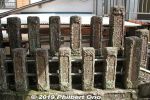
Pilgrimage groups formed among neighborhoods and occupations and they sent delegations to Oyama every year to pray on the group's behalf. It took 2 to 3 days to walk from Edo/Tokyo.26 viewsMt. Oyama became a destination for fun besides religion. Along the Koma-sando, you can see these many stone monuments and plaques engraved with the names of pilgrims and pilgrimage groups who worshipped on Oyama. Lots of names everywhere on this mountain.
|
|
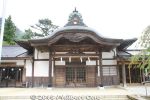
Kyakuden waiting room for worshippers. 客殿26 views
|
|
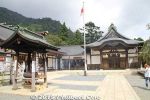
26 views
|
|

Entrance to the hiking path to the Honsha main shrine on Mt. Oyama's summit. Takes about 2 hours to reach the summit. Steep and rocky trail. 登拝門26 views
|
|
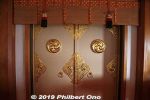
26 views
|
|
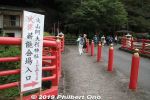
Way to the Takigi Noh venue.26 views
|
|
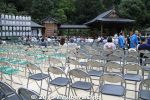
Cheap seats were ¥1,500.26 views
|
|
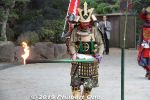
Before it got dark, some people dressed as samurai arrived near the Noh stage with sacred fire torches.26 views
|
|
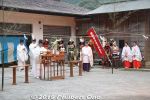
26 views
|
|

People wore Heian Period (794–1185) costumes from when Kyoto was the capital of Japan. These are Saiku government officials. 斎宮十二司官人26 views
|
|

High-ranking court ladies called Uneme (釆女) chosen from an aristocratic family. They were in charge of food and drink for the princess.26 views
|
|

Court ladies called Nyoju (女嬬) who serve in the inner palace (後宮) and take care of the Saio princess' daily living.26 views
|
|

Top-ranking court ladies called the Naishi (内侍) working at the Saiku Palace.26 views
|
|

The Saio princess appeared from the Seiden and gave an offering of an iris flower and prayed toward Ise Grand Shrines.26 viewsThe Saio was an unmarried, young Imperial princess, often the Emperor's daughter, who was appointed (by divination) to be the High Priestess of Ise Grand Shrines to pray for national peace and prosperity a few times a year in place of the emperor.
|
|

Torii in Saio Woods. 斎王の森26 views
|
|

Stone monument in the Saio Woods indicating the location of the Saiku Palace. "Site of the Saio Palace" erected in On Nov. 3, 1968.26 views斎王の森
|
|

Saio Woods 斎王の森26 views
|
|

The Saio princess procession (斎王群行) had about 120 people dressed in Heian Period (794–1185) costumes.26 views
|
|

26 views
|
|

26 views
|
|

High-ranking court ladies called Uneme (釆女) chosen from an aristocratic family. They were in charge of food and drink for the princess.26 views
|
|
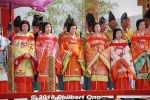
Ladies wearing a red band across their shoulders are court ladies called Nyoju (女嬬) who serve in the inner palace (後宮) and take care of the Saio princess' daily living.26 views
|
|
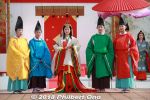
Posing with dancers called Maibito (舞人).26 views
|
|
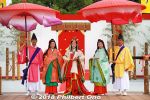
Posing with top-ranking court ladies called the Naishi (内侍) working at the Saiku Palace. They have fancy umbrella bearers called furyu-gasa. 風流傘26 views
|
|

The actual road where the Saio princess traveled to Ise Grand Shrines. Called "Kodai Ise-do" (Ancient Ise Road). 古代伊勢道26 views
|
|

The Higashiwakiden is only partially walled with an earthen floor, used as a waiting room or preparation room during ceremonies. 東脇殿26 views
|
|

About Saiku Heian-no-mori Park. Open 9:30 am to 5 pm (until 4 pm during Nov.–Feb.). The buildings are aso available for rent for private events.26 views
|
|

Opened in Oct. 1999, Itsukinomiya Hall for Historical Experience is in the same area. Various hands-on activities like weaving and dressing in Heian-Period costumes. Open 9:30 am–5 pm, closed Mondays. Admission free. いつきのみや歴史体験館26 views
|
|
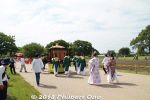
26 views
|
|
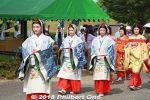
High-ranking court ladies called Uneme (釆女) chosen from an aristocratic family. They were in charge of food and drink for the princess.26 views
|
|

Flower offering by court ladies called Nyoju (女嬬) who serve in the inner palace (後宮) and take care of the Saio princess' daily living. 26 views
|
|

The Nyo-betto (女別当), who was the supervisor of the court ladies at special occasions such as the Saio procession, offer an iris flower.26 views
|
|

JR Seki Station building has a traditional design. It also houses a tourist information office and exhibition space. From Nagoya, it's about 26 views
|
|

26 views
|
|

26 views
|
|

26 views
|
|

About Oi house26 views
|
|

Kaiunro, former geisha house in Seki-juku. 開雲楼26 views
|
|

Steps to Kameyama Castle's Tamon-yagura turret.26 views
|
|

26 views
|
|

View from Tamon-yagura turret.26 views
|
|
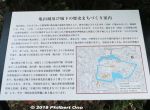
History of Kameyama Castle town.26 views
|
|

26 views
|
|

Way to Kameyama Castle's three-story turret site. 三重櫓跡26 views
|
|

Sekinohana is very scenic where you can walk around on a cliff overlooking the ocean. 関野鼻26 views
|
|

Sekinohana 関野鼻26 views
|
|
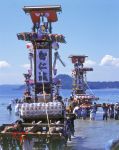
Anamizu's kiriko lantern festival, called Okinami Tairyo Festival, is held in the ocean during the day to pray for a good catch and safety of fishermen.. 沖波大漁祭26 viewshttps://www.hot-ishikawa.jp/kiriko/en/kiriko/okinami.php
写真提供:©石川県観光連盟
|
|
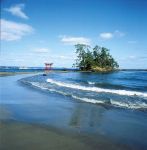
Bentenjima island on the Koiji Coast. Benten or Benzaiten is the goddess of music and water and anything that flows. The beach is popular with swimmers in summer.26 views写真提供:©石川県観光連盟
|
|

Gojinjo-Daiko is powerful, crazied drumming performance by several men donning demon masks and wigs. They are based in a small village called Nabune in Wajima where Gojinjo-daiko originated.26 viewsLegend has it that their drumming and fierce-looking masks drove off the invading forces of Uesugi Kenshin, ruler of Echigō Province (Niigata Pref.) during the Warring States Period in the 16th century.
写真提供:©石川県観光連盟
|
|
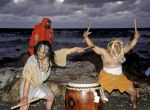
They beat taiko drums when they invaded Lord Uesugi Kenshin's base camp. They used sickles and hoes to chase away the army who was enroute to capture Nanao Castle. The villagers lived happily afterward.26 views写真提供:©石川県観光連盟
|
|
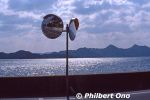
Mt. Fudekage is 313 meters high and part of the Seto Inland Sea National Park. Great views of Seto Inland Sea and Shikoku from Mihara, Hiroshima.26 views
|
|

Mt. Fudekage has a lookout deck for great views.26 views
|
|
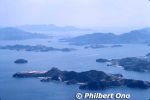
View of Seto Inland Sea from Mt. Fudekage in Mihara, Hiroshima.26 views
|
|
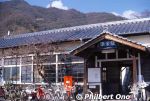
JR Sunami Station (JR Kure Line) is the closest to Mt. Fudekage. Then it's a 50-min. hike up. 須波駅26 views
|
|

Rebun's east coast near Kafuka Port.26 views
|
|

Kafuka Port 香深港26 views
|
|

Rebun's east coast.26 views
|
|

26 views
|
|

26 views
|
|

Looking down a sheer cliff. Very dramatic...26 views
|
|

Kutsugata Port Ferry Terminal in Rishiri when we visited. This building is now a restaurant after a new ferry terminal building was built nearby.26 views沓形港フェリーターミナル
|
|
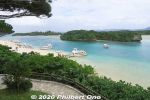
Kabira Bay on Ishigaki, perhaps the island's most famous tourist spot. Glass bottom boats to see coral and tropical fish in shallow water.26 views
|
|
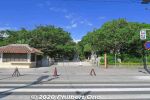
Entrance to Himeyuri Monument and Cenotaph (ひめゆり慰霊碑) in southern Okinawa in the city of Itoman. Building on the left is a flower vendor (closed).26 views
|
|
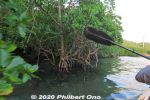
After the sunrise, we paddled along the mangroves on the river's edge.26 views
|
|

Northern Iriomote has Okinawa and Iriomote's longest river, Urauchi River (18 km). It's a popular tourist route to go on the jungle cruise, then hike through the forest to see two waterfalls on the river.26 viewsNear Urauchi-hashi Bridge at the mouth of the river, there's a boat dock for Urauchi jungle river cruises. Since the hiking trail is rocky or muddy, don't wear high heels or slippers. Wear sneakers or hiking shoes. Although there's a restroom along the hiking trail, it's not as clean as you would like. Better to use the toilet at the boat dock before the cruise. Also bring something to drink. The roundtrip cruise and hike will take about 3 hours. Map here
|
|

Behind Mariyudu Falls looking from upstream.26 views
|
|

Taking off at the old Ishigaki Airport.26 views
|
|

Taking off at the old Ishigaki Airport.26 views
|
|

Shiraho26 views
|
|
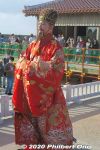
Instead of the grand procession on Kokusai-dori, the Ryukyu King and Queen and a few attendants held a smaller procession within the castle and also appeared a few times to pose for photos at Shuri Castle on Oct. 31 and Nov. 3, 2020.26 views
|
|
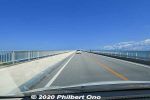
Kouri Ohashi Bridge to Kouri Island goes right over the ocean. Built in 2005, the bridge is 1,960 meters long, the longest bridge near Okinawa island. 古宇利大橋26 views
|
|
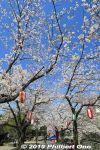
26 views
|
|
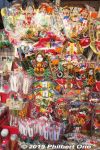
26 views
|
|
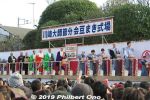
Kawasaki Daishi has about 70 people throwing beans each time, so a total of 210 people for the day. ¥70,000 x 210 = ¥14,700,000 income for the temple this day.26 views
|
|
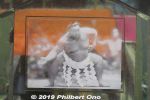
Photo of Kitanoumi as yokozuna.26 views
|
|
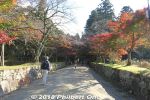
Crossing the Meishin expressway. There's a bridge over a busy and noisy expressway which you cross to get to the other side of the temple grounds.26 views
|
|
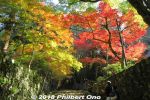
Saimyoji's autumn highlight is its stunning path to the temple.26 views
|
|
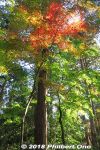
26 views
|
|
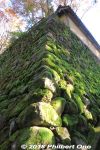
26 views
|
|
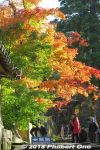
26 views
|
|

26 views
|
|
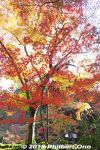
So beautiful in autumn!26 views
|
|
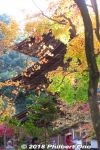
26 views
|
|
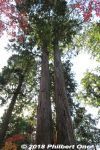
26 views
|
|
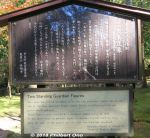
About the Niten gods guarding the gate.26 views
|
|
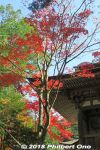
26 views
|
|
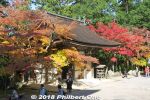
26 views
|
|
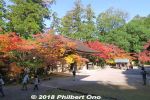
26 views
|
|
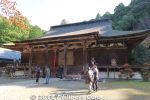
Saimyoji Temple Hondo hall (National Treasure).26 views
|
|
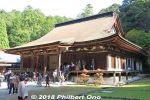
Saimyoji Temple Hondo hall (National Treasure)26 views
|
|
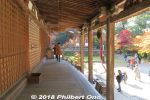
Saimyoji Temple Hondo hall (National Treasure)26 views
|
|
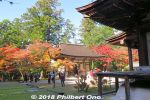
26 views
|
|
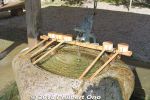
Water basin26 views
|
|
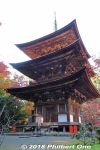
26 views
|
|
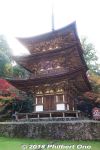
26 views
|
|
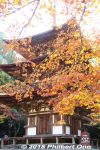
26 views
|
|
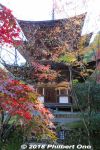
26 views
|
|
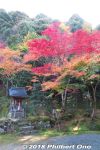
26 views
|
|
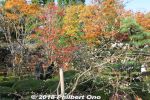
"Ever-blooming" cherry tree (fudan-zakura) planted next to a tree showing fall colors. This special cherry tree blooms in Nov. during the fall colors. 不断桜26 views
|
|
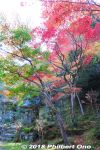
26 views
|
|
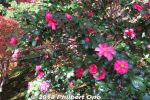
26 views
|
|

Horai-tei Garden26 views
|
|
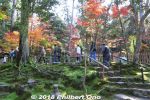
26 views
|
|
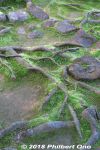
Tree roots26 views
|
|
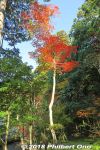
Red maples towering above.26 views
|
|
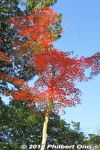
26 views
|
|
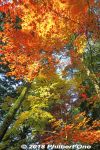
26 views
|
|
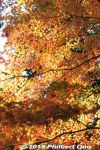
26 views
|
|
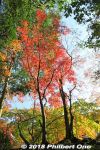
26 views
|
|
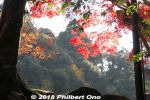
26 views
|
|
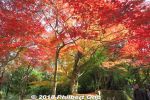
26 views
|
|
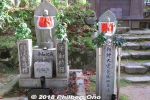
26 views
|
|
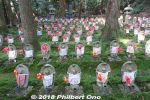
26 views
|
|
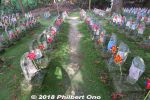
26 views
|
|

26 views
|
|
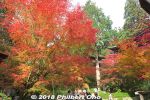
26 views
|
|
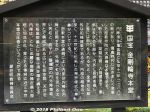
Kongorinji's main temple hall is a National Treasure housing an 11-faced Kannon statue and 13 other statues designated as Important Cultural Properties. Aisho, Shiga.26 views
|
|
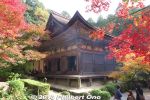
Kongorinji Hondo main hall, National Treasure amid autumn maple leaves.26 views
|
|
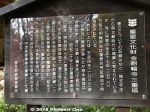
About the three-story pagoda, National Important Cultural Property.26 views
|
|
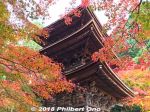
Kongorinji's three-story pagoda, National Important Cultural Property amid maple leaves.26 views
|
|
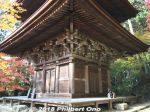
26 views
|
|
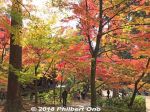
26 views
|
|
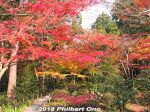
26 views
|
|
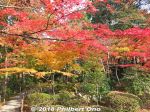
26 views
|
|
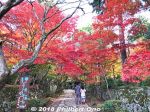
26 views
|
|
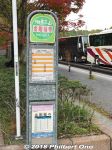
Near Koongorinji's main gate is a parking lot and bus stop.26 views
|
|
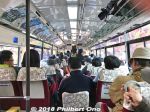
Inside the Koto Sanzan shuttle bus from Kongorinji to Hyakusaiji. Quite full this day. 26 views
|
|
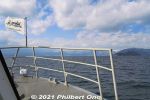
Chikubushima in sight.26 views
|
|
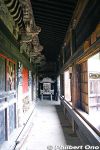
Corridor facing the Funa-roka before the restoration. Everything was drab looking. After the restoration, the windows on the right are now kept closed.26 views
|
|
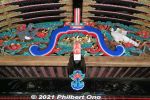
Nest of birds in this decorative, hump-shaped wood support called "kaeru-mata" (蟇股). Commonly found on entrances of important buildings. In Nikko, Toshogu Shrine's famous "Sleeping Cat" carving is also a kaeru-mata.26 views
|
|

According to legend, Mt. Ibuki and Mt. Azai-dake (Kanakuso-dake) in northern Shiga argued over who was the highest in Shiga. Mt. Ibuki got so upset by the argument that he drew a sword and sliced off Azai-dake's head.26 viewsThe sliced-off peak fell into Lake Biwa and became Chikubushima. Read the full folktale here: https://shiga-ken.com/blog/2014/07/the-birth-of-chikubushima/
|
|

Inside Interlaken. The boat also has an outside deck.26 views
|
|

Rear view of Imazu Port building. Rebuilt and opened on March 22, 2020.26 views
|
|
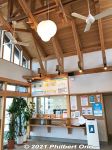
Boat ticket office.26 views
|
|
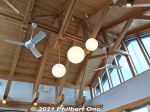
Ceiling.26 views
|
|
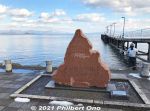
Biwako Shuko no Uta song monument at Imazu Port. In June 1917, a song called Biwako Shuko no Uta (Lake Biwa Rowing Song) was composed by college student Taro Oguchi during a boat rowing trip around Lake Biwa.26 views
|
|

If you are walking from Omi-Imazu Station, you can see this large sign on the side of the old song museum showing the way to the relocated song museum.26 views
|
|

Exhibit for Oguchi Taro who composed the song.26 views
|
|
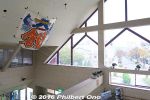
Yokaichi Station always has a large kite decoration.26 views
|
|
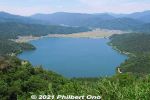
Lake Yogo as seen from Mt. Shizugatake in early June. Although it's close to Lake Biwa, it is totally separate from Lake Biwa.26 views
|
|

Bihoro Pass Scenic Point has two lookout points a short walk from each other. This is from the second lookout point. Both have similar views of Lake Kussharo. Bihoro Pass is within Akan-Mashu National Park in Hokkaido. 26 views
|
|
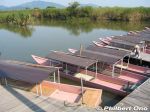
26 views
|
|
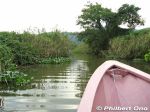
26 views
|
|
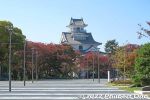
Nagahama Castle in autumn.26 views
|
|
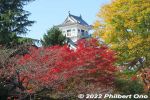
26 views
|
|
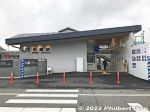
New JR Ishibe Station, Kusatsu Line. New station under construction in late 2022.26 views
|
|
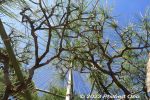
Pine tree at Mukojima Hyakkaen Garden, bottom view.26 views
|
|
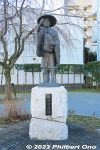
Statue of Kawai Sora, Matsuo Basho's apprentice and travel companion for Oku-no-Hosomichi. This statue is at the intersection leading to the old Nikko Kaido Road. It's across the bridge from the Basho statue at the watchtower.26 views
|
|
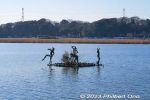
Small sculpture in Lake Teganuma, Abiko, Chiba.26 views
|
|

Jens Chr. Kolberg from FISA conducted the closing ceremony.25 views
|
|

The FISA flag is given to the Canadian host of next year's FISA World Rowing Tour.25 views
|
|
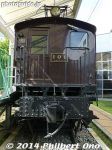
ED101 class electric locomotive – No. 101.25 views
|
|
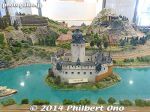
German castle25 views
|
|

Behind the reconstructed Shimbashi Station, the train platform is partially reconstructed on the original location.25 views
|
|

Hagi-yaki pottery shop.25 views
|
|

The stone base for Hagi Castle's main tenshu tower.25 views
|
|

Torii25 views
|
|

25 views
|
|

25 views
|
|

Gift shop and parking lot at Hagi Castle.25 views
|
|

Tenjuin Mausoleum entrance. The graves of Mori Terumoto and his wife. There used to be a temple here, but only the graves remain.25 views
|
|

25 views
|
|

Traditional townscape in Hagi, Yamaguchi.25 views
|
|

Front gate of Mori Clan's detached residence.25 views
|
|

This road goes to Hagi Museum. 25 views
|
|

Mori Terumoto headed the Mori Clan who ruled the Choshu domain.25 views
|
|

25 views
|
|

Old tape recorder.25 views
|
|

Inside Higashi-Hagi Station. Pretty quiet place. Less than 300 people per day get on the train here.25 views
|
|

25 views
|
|

25 views
|
|

25 views
|
|

25 views
|
|

About the the Shoka-sonjuku school.25 views
|
|

Shoka-sonjuku school. 松下村塾25 views
|
|

Portrait of Yoshida Shoin in Shoka-sonjuku school. He taught at the school for only a year. 松下村塾25 views
|
|

25 views
|
|

25 views
|
|

25 views
|
|

Amulet shop25 views
|
|

Monument indicating this place as where the Meiji Restoration started.25 views
|
|

Yoshida Shoin studying.25 views
|
|

25 views
|
|

The main kura storehouses here. 赤瓦二号館25 views
|
|

Dairenji Temple.25 views
|
|

Turnstile inside Tottori Station.25 views
|
|

Lake Togo is a small brackish lake connected to the Sea of Japan through a 2 km river. The perimeter is 12 km, and there's a walking path. There are no swimming beaches.25 viewsIt is a rare lake in Japan to have hot spring water gushing out of the center of the lake. The warm water creates a misty lake surface in winter.
|
|

Near Hawai Onsen is a nice lakeside park.25 views
|
|

Hawai Onsen got its start in 1843 when local fishermen noticed warm spring water gushing out the lake bottom. The local Tottori lord gave them permission to utilize the hot spring water to make it easier to boil water, etc. 25 views
|
|

Sennentei had a nice New Year's decoration with kadomatsu and tanuki. 千年亭25 views
|
|

25 views
|
|
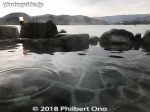
Men's outdoor bath at Sennentei. Nice view of the lake. Hawai Onsen, Tottori. 千年亭25 views
|
|

This onsen had several name changes. In 1927, "Asozu Onsen" was renamed "Shin-Togo Onsen" (新東郷温泉). In 1978, it was renamed "Hawai Onsen" (羽合温泉). 25 viewsIn 1998, they changed the Japanese name to はわい温泉 replacing the "hawai" kanji with hiragana.
|
|

Inside the Gift shop.25 views
|
|

Adachi Museum of Art garden.25 views
|
|

Natural scroll next to a Buddhist altar.25 views
|
|

Adachi Museum of Art garden, Shimane Prefecture.25 views
|
|

JR Yasugi Station welcomes visitors to the land of Yasugi-bushi.25 views
|
|

Playing the tsuzumi shoulder drum.25 views
|
|

The most famous Yasugi-bushi song is "Dojo-sukui" (Loach Scooping) danced by a Hyottoko comical man. The dancer uses a basket scoop to catch the loaches.25 views
|
|
| 71441 files on 284 page(s) |
 |
 |
250 |  |
 |
|